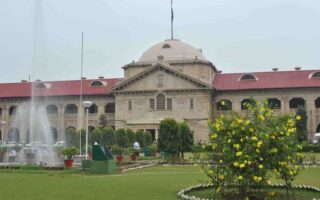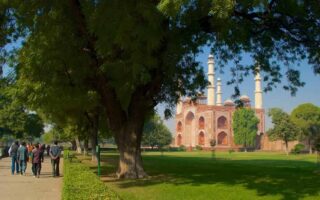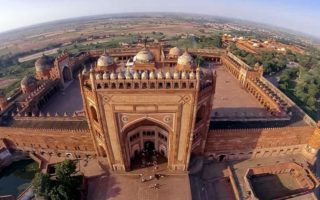The Wildlife of Uttar Pradesh is placed in the foothills of Himalayas and has number of exceptional species of the world. There are many national parks and wildlife sanctuaries in Uttar Pradesh. There are many tourists coming from all over the world to experience the wildlife of the state. Some of them are famous all over the world that includes Corbett National Park that has diverse topography and vegetation. The park is popular among the tourists for Tiger and many people who love wildlife just come to see tiger. The park has maximum number of Tigers in the country. The experience to view the animals in their natural lifestyle is just incredible.
There are more than 315 species of birds and 23 species of animals living in Rajaji National Park. The other parks that are interesting and worth a visit include Ranipur Wild life Sanctuary, Kaimoor Wildlife Sanctuary, Dudhwa National Park and many more. The Wildlife in Uttar Pradesh has an amazing collection of different species of animals. The capital city of Uttar Pradesh is Lucknow. The main attractions of the state are Agra, Taj Mahal, Imambara, The Ghats and many others. The best time one can see the animals and birds in the Sanctuary or the National Park is from October to March.
Hastinapur Wildlife Sanctuary
- Location: Meerut, Ghaziabad
- Spread Around: 2073 sq kms
- Established in: 1986
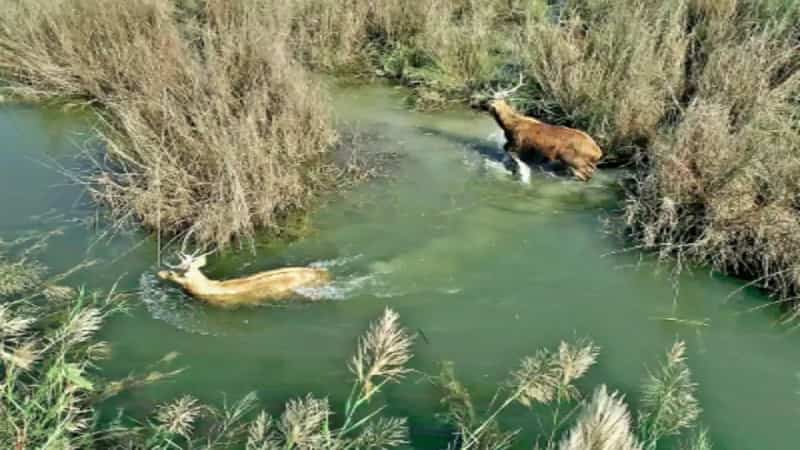
Hastinapur Wildlife Sanctuary was establishes in 1986 and is spread over an area of 2073 sq kms. There are number of wild animals found in the sanctuary like swamp deer, nilgai, chital, leopard, wolf, gharial, hyena and wild boar. There are many spots here that are beautiful and picturesque. Many people come here from near and distance places to enjoy the time.
The tourists here come from all over the world from which many are local people who come on weekends with their family to enjoy the wildlife of the sanctuary. The best time you can visit this place and enjoy is from April to November. Photographers get some good pictures of beautiful birds which are found here. The sanctuary is located in Meerut, Ghaziabad in Uttar Pradesh in Jyotiba Phule Nagar.
The Wildlife of the Park
There are number of wild animals in the park which includes antelope, cheetal, sambhar, leopard, blue bull, wild cat, hyena and number of different types of birds. There are also alligators.
Best time for Trip
It mostly depends on the tourists what they are interested in. If some one likes to view the large mammals then the summers would be the best time to visit and for water birds, winters would be the perfect time. For most of them the best time would be January to June.
Katarniaghat Wildlife Sanctuary
- Location: Bahraich
- Other Attractions: The Ghats, Taj Mahal, Imambara – Lucknow and Agra Fort
- Best time for Trip: October to March
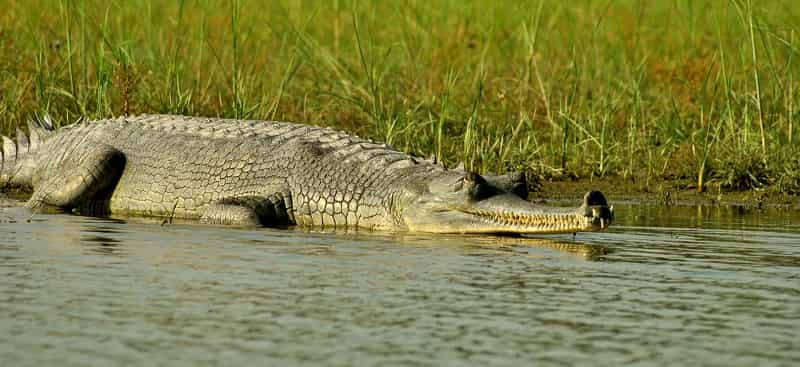
Katarniaghat Wildlife Sanctuary is located in the Bahraich district on the Indo-Nepal border in the Terai area. The sanctuary covers the area of around 400 sq kms and was established in 1976. It is situated in the Bahraich district on Indo-Nepal border in the Terai area.
The wildlife population of the sanctuary includes Tiger, Swamp deer, Leopard, blackbuck, barking deer, chital. Nilgai, sambar, wild boar and sloth bear. There are different species of migratory and local birds living in the park. In the Girwa River and its tributaries, crocodile and alligators can be found. The vegetation of the sanctuary includes Saal, Sheesham, Asna, banyan, Bel, Kusum, Khair, munj and Kaus.
The main attractions of the state are Agra, Taj Mahal, Imambara, The Ghats and many others. The best time one can see the animals and birds in the Sanctuary or the National Park is from October to March.
The Natural Inhabitants
Katarniaghat Wild Life Sanctuary is popular for its wildlife population which includes leopards, deer, tigers, bear, parlias, jackals, langoors, cheetals and monkeys. The local and migratory birds can also be seen in the park.
Ranipur Wildlife Sanctuary
- Location: Chitrakoot district
- Spread over: 230 sq kms
- Altitude: Approx. 259 m
- Important Species: Tiger, Leopard, Chinkara
- Best time to Visit: Mid-June to Mid-November
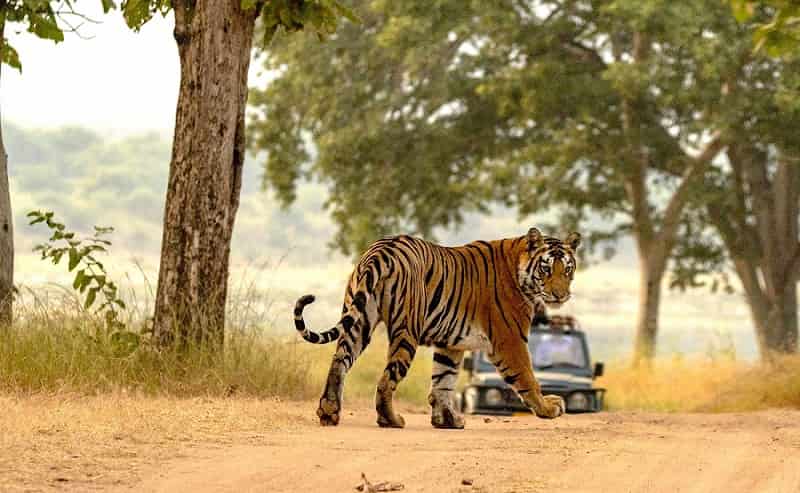
Ranipur Wildlife Sanctuary is located in Uttar Pradesh and covers the area of around 230 sq kms. It is situated at an altitude of around 259 m. The main species found here are Leopard, Chinkara and Tiger. The other species that makes the sanctuary famous are Sloth bear, peafowl, Blackbuck, jungle fowl, spur-fowl, fishing cat and printed partridge
The Ranipur Wildlife Sanctuary has number of animals like tiger, leopard, sambar, sloth bear, peafowl, blackbuck, jungle fowl, spur-fowl, printed partridge, chinkara and fishing cat. The animals are the main attraction for the tourists for which they come from near and far places. There are many spots in the park which are picturesque and beautiful. Tourists can actually see and experience the natural wildlife of the animals by visiting the park.
Chandra Prabha Wildlife Sanctuary
- Location: Close to Varanasi, Uttar Pradesh
- Spread over: Area of around 78 sq kms
- Important Species: Chinkara, Panther
- Best Time for Trip: Mid November to Mid June
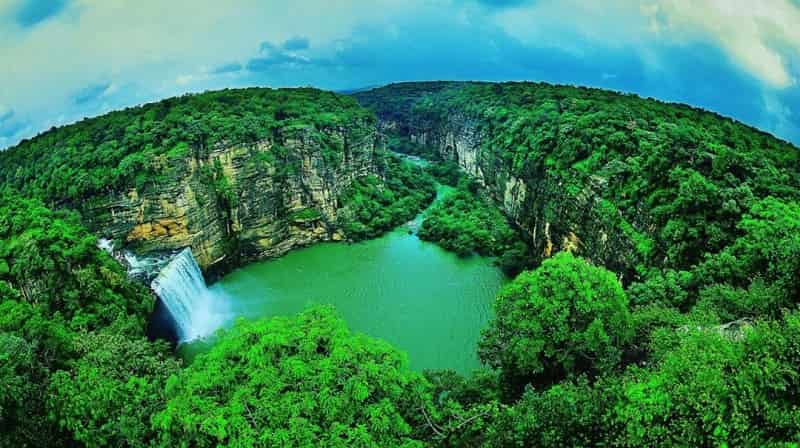
Chandra Prabha Wildlife Sanctuary is located near Varanasi in Uttar Pradesh which is spread wildly around 78 sq kms. It was established in 1997. It is situated inn Vindhya forest range and is on Vijaigarh and Naugarh hillocks in Chandauli district.
The main spices found here are Chinkara and Panther. The best time one can visit is from Mid November to Mid June. The flora and fauna in the sanctuary would be a feast to your eyes and is also loved by lovers of nature.
The Wildlife
The Park is filled with a varied and rich wildlife that includes Panther, Sambar, Chinkara, Chital, peafowl and partridge. There are also other wild animals which can be seen around in the sanctuary like Leopard, jackal, hyena, wolf and bear.
National Chambal Wildlife Sanctuary
- Location: Etawah in Agra, Uttar Pradesh
- Established in: 1979
- Important Species: Alligator, Crocodile
- Best time to visit: Mid June to Mid November
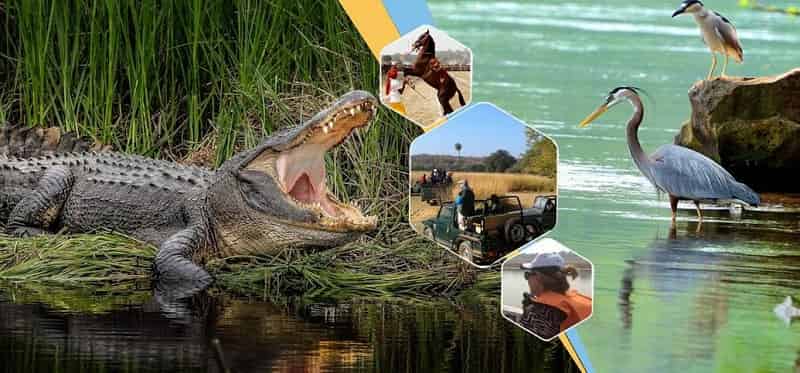
National Chambal Wild Life Sanctuary is situated in Etawah, Agra in Uttar Pradesh which is founded in 1979. The sanctuary is widely spread over an area of 635 sq kms. The most people are attracted towards the species such as Alligator and Crocodile. There are many other animals found in the sanctuary which are rare and special. The visit to the sanctuary will give you an incredible experience.
The Sanctuary has a remarkable collection of interesting and exceptional species. The Gangetic dolphin is the most important magnetism of National Chambal Sanctuary. Rajasthan, Uttar Pradesh and Madhya Pradesh co-administer the large area of the Sanctuary.
The Wild Population
The people are attracted towards the sanctuary mostly due to the rare Gangetic Dolphin. The park also houses crocodiles, sambhar, alligators, nilgai, wild boar and wolf. The are also number of aquatic and terrestrial animals.
Dudhwa National Park
- Location: Lakhimpur Kheri and Bahraich (Northern Uttar Pradesh)
- Best Time to Visit: October to March
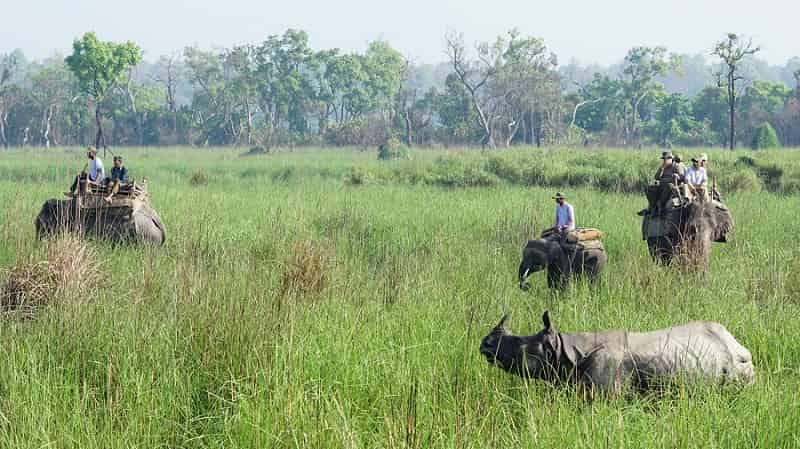
Dudhwa National Park is famous for Tiger Reserve which also has mosaic of grassland, lakes, marshes and Sal forest that makes this park very wild. It is located in Lakhimpur District on Indo-Nepal border.
It is spread over an area of 614 sq kms. Terai eco system is there in this park which is productive and exceedingly diverse and few remaining examples of the eco system.
The Indo-Nepal border falls on the northern side of the Reserve and the southern side has River Suheli flowing. The most endangered and rare species reside here like tiger, swamp deer, leopard, Bengal florican and hispid hare are found here.
The Dudhwa National Park was earlier as Sonaripur sanctuary which was established in 1958 for the protection of the rare species of deer. There was large number of Swamp deers found which are also known as “Bara Singha” (Twelve antlers) deer which was main kind of Indian Deer. There was an extreme turn down in number of deers so the Sonaripur sanctuary was established.
Then as the need increased the Sonaripur sanctuary was extended to 212 sq kms and was renamed as Dudhwa Sanctuary and then later in 1977 it was announced as the National Park.
In 1988 after 11 years, Dudhwa became the part of the project Tiger so the area of Kishanpur sanctuary was added to Dudhwa sanctuary and the overall area of the Dudhwa sanctuary went upto 614 sq kms. The Reserve has more than 1800 Bara Singha found and are mostly seen in the kakmha and sathiana blocks.
Earlier there were many India Rhino found in the sanctuary but they have been hunted and by 1878 they got entirely vanished from this area. After some time it was feared that disease and epidemics would vanish all the existing population in West Bengal, Assam and Nepal, so they came to a conclusion to distribute them in the other areas which are safer.
There was an experiment held where five females and one male Rhino were kept in Assam and Nepal, and now due to this there are number of Rhinos found easily. Now at this time tourists are not allowed to visit the area of Rhino’s.
The Park also has number off tigers living in the area but cannot be seen easily due to the forest cover and dense nature. They can only be protected by the project tiger so that they can be saved.
The main attractions of the state are Agra, Taj Mahal, Imambara, The Ghats and many others. The best time one can see the animals and birds in the sanctuary or the national park is from October to March.
Kaimoor Wildlife Sanctuary
- Location: Bihar Border, Uttar Pradesh
- Founded in: 1982
- Best Time to Visit: November to April
- Main Attraction: Leopard, Antelope and Blue Bull
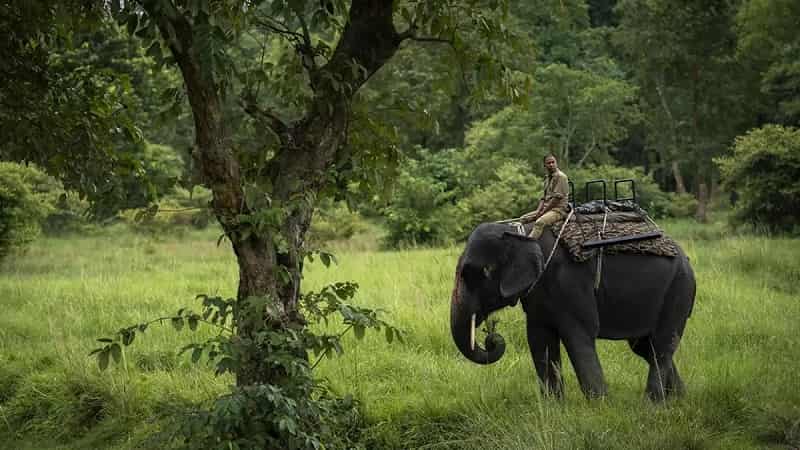
Kaimoor Wild Life Sanctuary is establishes in 1982 which is located on the Uttar Pradesh – Bihar border. It is wildly spread over 500 sq kms. The sanctuary is reachable easily by road.
The population of the sanctuary includes leopard, chital, blackbuck, peafowl, ratel and chinkara. The main species found here are Blue Bull, Antelope and Leopard. The best time is from November to April when one can see most of the animals as they come out.
The Natural Inhabitants
The main species of wild animals found in the park are antelope, wild cat, blue bull and bijju. There are also some different local and migratory birds which are found in the sanctuary. The vegetation grown here is important which includes saal, mahua, sheesham teek, jamun, salai, siddha, jheengar and koraiya.
Nawabganj Wildlife Sanctuary
- Location: 45 kms away from Lucknow, Uttar Pradesh
- Best time to Visit: Throughout the year
- Main Attraction: Parakeet, Woodpecker
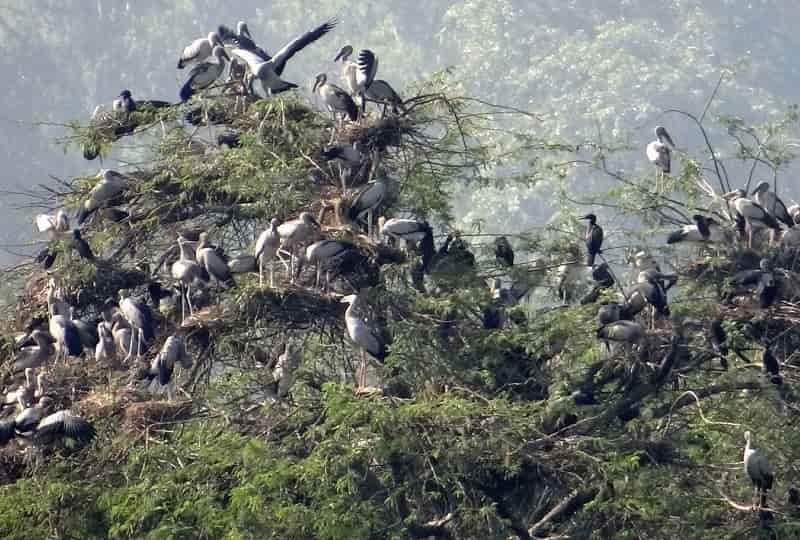
Nawabganj Bird Sanctuary is famous for many water and migratory birds. It is situated 5 kms away from Lucknow. Tourists come here specially to see the migratory birds which cannot be seen easily. This is a perfect place for watching birds or doing photography.
The sanctuary has a vast swamp and thin lake bordered with diverse dry forest. The sanctuary has a good number of flora and fauna populations such as pochard, woodpecker, shoveller, coot, parakeet, and common teal and purple moorhen. The main attraction of thee tourists here is parakeet and woodpecker. The best time to see these birds and animals here is all the way through the year.
Natural Inhabitants
There is a rich collection and has good quantity of avian population in the sanctuary that includes woodpecker, pochard, parakeet, shoveller, coot, common teal and purple moorhen.
- Must Read: Famous Historical Monuments in Uttar Pradesh
